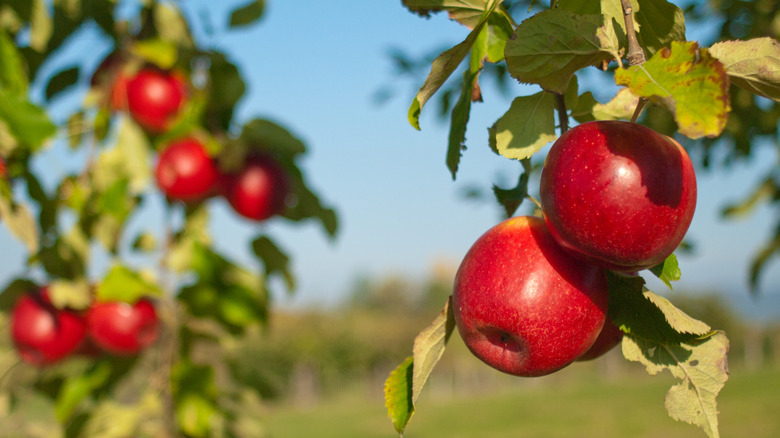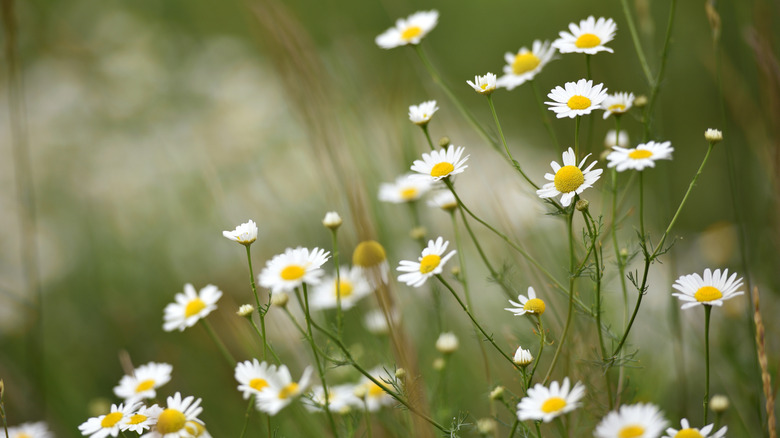The Popular Herb You'll Want To Plant Near Apple Trees For All Of Its Benefits
Growing apple trees at home is a joy, but the care requirements are far from simple. From fungal diseases to pests, an array of issues keep gardeners on their toes when caring for an apple tree. So, it's no surprise that many utilize companion planting to benefit their gardens and orchards, improving soil health and even the flavor of the apples. And for apple trees, there may be no better companion than chamomile (Matricaria chamomilla).
Like many herbs, chamomile offers benefits that make it a natural remedy, including antibacterial and antifungal properties. These qualities can help nearby apple trees, which are prone to fire blight, apple scab, and other ailments. Chamomile is one of several plants that work as natural pest control, possibly repelling mosquitos and making tasks like pruning and harvesting more enjoyable. These tiny flowers' scent also attracts pollinators and beneficial insects like ladybugs, which reduce your need to intervene with pesticides to keep pests like aphids away from the apple trees. Crucially, this workhorse of a plant can also improve soil health around the fruit trees, adding calcium, magnesium, and potassium. And, at the end of the day, you can make tea out of it, so it's probably worth a spot in your garden.
How to care for a chamomile ground cover around an apple tree
Chamomile thrives in poor soil, so there's no need to fertilize, especially if you are already giving its apple tree friends a little boost. That said, make sure the soil drains well. Aphids can be a problem, but the ladybugs the plant attracts will help control those unwanted guests. One issue you might run into is providing enough light. Chamomile needs full sun to flourish and planting it around an apple tree can leave the plants in the tree's shade. So, chose a location that gets six hours of sunlight daily. Also, note that in the right conditions, chamomile can spread aggressively — keep this tendency in mind before deciding where to plant.
Chamomile flowers will self-seed if you let them. If you want to start chamomile plants from seed, it's easy. Just seed directly into the ground in the fall or start them indoors about six weeks before the last frost. The daisy-like flowers blooms in early- to mid-summer and will keep going all the way until the frost hits, as long as you regularly remove spent blooms. If chamomile has given you the companion planting bug, check out these five pairs of companion plants you should grow together.

